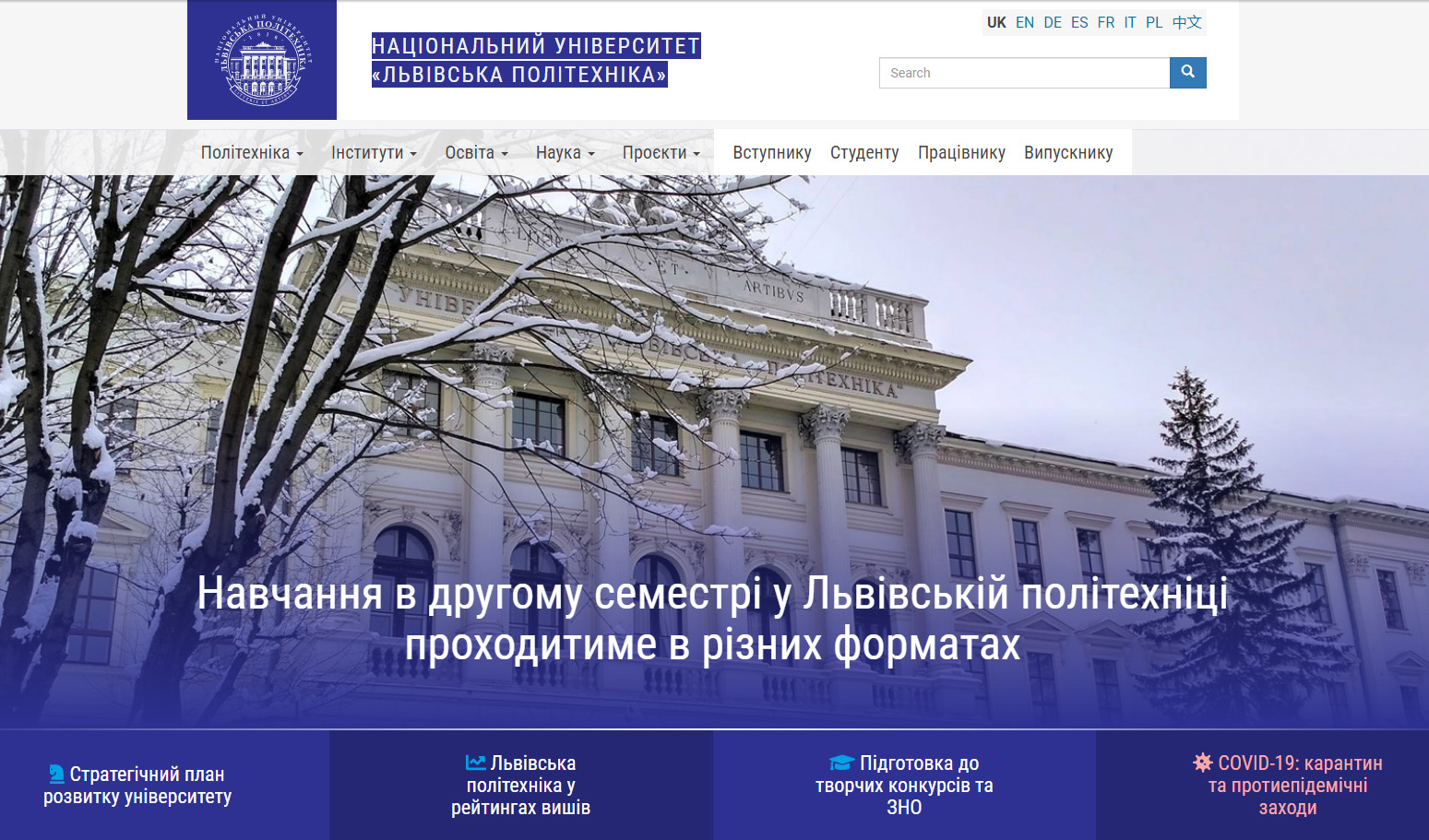Web accessibility is the inclusive practice of ensuring there are no barriers that prevent interaction with, or access to, websites on the World Wide Web by people with physical disabilities, situational disabilities, and socio-economic restrictions on bandwidth and speed. Proper use of web accessibility principles in the development of websites and their content makes it possible to provide equal access to online information resources for all users. Thus, in the fall, Lviv Polytechnic got a new version of the official website, which was adapted for students with special needs.
«Since this fall Lviv Polytechnic received a new version of the official website, the Center of Information Support has been working on ensuring the web accessibility of the new version. When adapting the elements of the website for users with special educational needs, more attention is paid to ensuring a sufficient level of contrast, a clear and understandable structure of the elements, and the necessary metadata for the content. The work yielded results, as checking the website’s pages by relevant services (including the online tool of the Center for People with Disabilities at Utah State University in the USA, which is considered one of the most authoritative) shows no accessibility errors. For the first time, Polytechnic did such work seriously in the context of its official information resources, and for two years now, best practices of web accessibility have been part of the educational process», said Associate Professor Oleksandr Berezko, Head of the Web Services Support and Development Unit, CIS, who is responsible for website development.
What motivates to create accessible web content? There are at least three main reasons:
- improving the lives of people with special needs, including educational;
- access to a wider audience;
- avoidance of lawsuits, undesirable reputational risks in the media.
«The Web Content Accessibility Guidelines (WCAG) are part of a series of web accessibility guidelines published by the Web Accessibility Initiative (WAI), the Wide Web Consortium (W3C), which is the main international organization for standardization on the Internet. These are the guidelines on how to make websites and their content more accessible, especially to people with disabilities, as well as to all software agents. WCAG 2.0 was published in December 2008, which became an ISO standard in October 2012. WCAG 2.1 became a W3C recommendation in June 2018», added Oleksandr Berezko.
